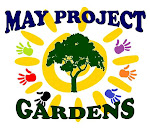 Just got back from a couple of weeks
in north Wales, and what a beautiful place. We spent most of our time hiking up
mountains and walking the woods, with the occasional dip in the river. The
weather had been kind to us and we even had tow warm sunny days. It was nice to
get away for a bit and not we back it’s back to working the land.
Just got back from a couple of weeks
in north Wales, and what a beautiful place. We spent most of our time hiking up
mountains and walking the woods, with the occasional dip in the river. The
weather had been kind to us and we even had tow warm sunny days. It was nice to
get away for a bit and not we back it’s back to working the land.
It’s been an interesting growing
season. It’s been really good for growing and it has only just started turning.
So what have we been up to? We’ve been working hard to get our new allotment in
order. The site is about 75m2 but we are trying to secure a further
100 or so m2 for next season. Though we started late in the season
we were still able to harvest a few crops, namely potatoes, beans, pumpkin, a few
tomatoes and lots of perpetual spinach. We started working the plot in late
June and most of the plants went in close to the end of July. This site posed a
few challenges for us. The soil is heavy clay and thus partly waterlogged and
infested with both bindweed and creeping buttercup.
 |
| The allotment in the beginning |
The first step to prepping the plot
was to identify the plants already growing there and where the shaded areas
were. Half of the plot is in shade for the last part of the day, which is not
ideal but still works. After identifying the plants and shaded areas on the plot we
had to examine the soil, which I mentioned was heavy clay. We went away and
came up with a simple design for the site which involved tilling, manuring, and
mulching. It was hard work digging the site, but I felt it was essential for us
to un-compact the soil before we attempted to grow anything. It was hard work
but we managed to loosen the soil and remove most of the troublesome weeds. The
next step was to find lots of manure which is easy to do here. We managed to
secure bags and bags of horse manure from our neighbours and dug that into the
plot together with rotted woodchip, grass clippings, and lots of chopped up
nettles, all in an attempt to add some organic matter to the soil and aid
drainage. We then added a mulch layer of cardboard and topped it all off with
some spoilt straw. We got four large raised beds and one smaller wild herb bed.
 |
| Drying dandelion flowers for tea |
We left the site to settle for four
weeks before we started adding seedlings which we started off in the
greenhouse. We have also been collecting lots of herbs and drying them out for
teas. So far we have had nettles, dandelion leaves and flowers, mint, lemon
balm, calendula, elder flower, and camomile.
 |
| A selection of herbal teas |
One of the most important things I
consider when starting a new garden is waste. I try my best to reduce the
amount of resources that leave the site. I constructed a twin compost bin in
our small garden at home and all of our organic waste is recycled there and
turned into high nutritious humus. We harvested our first batch of compost only
10 weeks after building up the pile. From approx. 1m3 of composting material
we managed to harvest three bags of good quality sieved compost (approx. 75lt
each bag) and three bags of course mulch. I am very pleased with these results.
I am always looking for ways to more efficiently deal with waste and I am
hoping to build a humanure composting bin at the allotment when we eventually
secure the next half of the site.
 |
| Sieving and bagging up compost |
We went to visit a small community
vegetable growing farm in Norwich a got inspired by the gardeners’ pallet
craft. I have been using pallets to build things for sometime but had not
branched out pass the odd bird house or path borders. I saw a beautiful pallet
chair at the farm and immediately started designing my own in my head. I built
one and it was very well received by my other half.
 |
| Pallet bench |
I then built a few bookshelves and a
small two seater pallet bench. It’s good fun working with pallets, turning what
would have been a waste product into something useful. I also use pallets to
make borders around the beds at the allotment.
 |
| Building bed borders |
It has been a great year for apples
and here in Norfolk there is no shortage of the lovely juicy fruit. We went out
apple picking and collected five sacks. We rented a small apple press and made
lots of juice and currently have about 60lt of cider brewing in the garage.
We’ve got alot of work to do before we
get to where we hope to be. We’ve got ourselves a rocket stove and are now
working on building a small outdoor kitchen. We are also creating one more
growing bed in the garden and installing some woodchip paths around our new
home. Lots to do. I am hoping that most of these will be done over the winter
months which surprisingly tend to be my most productive time of year. I’ll keep
you posted in the progress.


















































